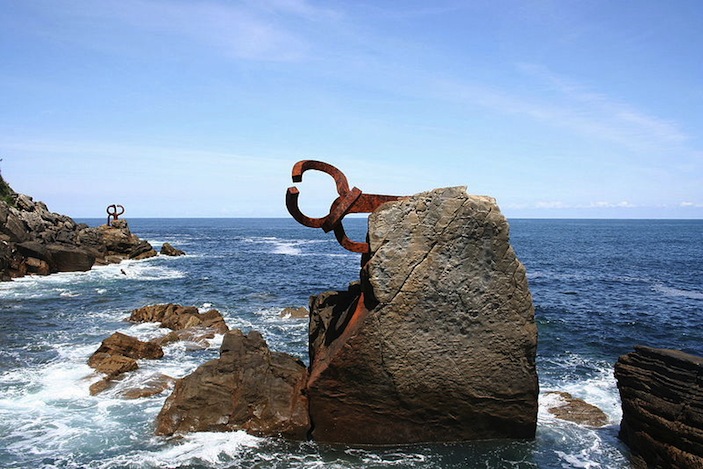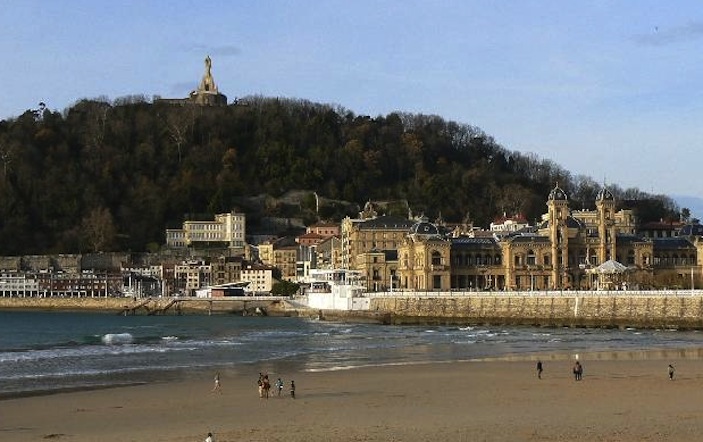Spain is full of amazing festivals, seemingly in every town, and Valencia’s famous Las Fallas, which begins tomorrow, ensures the Mediterranean city is known for more than just being a stopping off point for visitors to nearby La Tomatina each August. As a commemoration of Saint Joseph, hundreds of thousands–perhaps even millions–gather to enjoy fireworks, music, and burn huge paper sculptures. This practice is believed to help people start a fresh new year by burning bad thoughts and memories.
Every neighborhood of Valencia has an organized group of people (the Casal faller) who host fundraising dinner parties featuring paella throughout the year, and use the money to construct a massive sculpture (falla) that will eventually be burnt in the festival. The falla is constructed according to an agreed-upon theme, which is typically a satirical shot at anything or anyone who draws the attention of the falleros. Recent editions have included George W. Bush, Barack Obama, Lady Gaga and even Shrek. These are all entered into a contest, and must be completed by March 15th to avoid facing disqualification. From there, they are placed in their respective (albeit temporary) homes during a ceremony called La Planta (the rising), where they remain until being burned.

Some of the larger fallas…

More grand fallas…

(image credit: Times of Malta)

(image credit: Times of Malta)
The Main Event(s)
The event itself is a 5-day extravaganza, featuring a multitude of historical, religions and comedic processions. Each day begins sharply at 8am with La Despertà or, wake up call, which features brass bands marching down the street playing loud music. Close behind them are the fallers throwing large firecrackers (indeed once you’ve been here, you will no longer be surprised to hear explosions even in the middle of the night, or kids seemingly as small as babies throwing pyrotechnics).
Later in the day, at exactly 2pm, comes La Mascletà, an explosive barrage of coordinated firecracker and fireworks displays (the term “las fallas” actually means “the fires” in Valencian, so this shouldn’t come as a surprise). During this, pyrotechnicians are competing for the honor of providing the final Mascletà of the festival on the night of March 19th, also known as La Nit del Foc (“The Night of Fire”).
Besides these two regularly scheduled events, the days of Las Fallas are full of a variety of offerings—bullfights, parades, paella contests and even beauty pageants—and stalls everywhere selling fried goodies like pores, xurros, buyols and roasted chestnuts. Each night of the festival features a fireworks display, with each day progressively becoming grander until the main event on the 19th.

A typical Mascelta crowd for Las Fallas in Valencia
La Cremà
On the final night of Falles, around midnight on March 19, the falles are burnt as huge bonfires. This is known as la cremà (the burning), the climax of the whole event, and the reason why the constructions are called falles (“torches”). Traditionally, the falla in the Plaça de l’Ajuntament is burned last. By this point, the whole city is like a dance party, except that instead of music there is the explosive sound of people throwing fireworks around randomly. This, of course, leads to the occasional building being burned, though firefighers have adopted some clever tricks to in recent years to minimize this risk.

La Crema

La Crema
History of Las Fallas
Like most of Spain’s events, the history of Las Fallas is widely disputed, although popular belief suggests that it started in the Middle Ages, when artisans disposed of broken artifacts and the wooden lanterns that lit the streets to celebrate the spring equinox. This also coincided with the church’s festival of Saint Joseph, who was the patron saint of carpenters. From there, smaller characters started being created from the wood, which evolved into the grand statues that are seen today when polystyrene and soft cork made it possible to produce falles over 30 meters tall.
The event has become so huge that a significant part of the local economy is devoted to it, and an entire suburban area has taken on the name of City of Falles due to the excessive amount of artisans, sculptors, painters and others who spend months producing the fallas here. While Valencia boasts a healthy population of about 1 million, it is estimated that this number is more like 3 million during the festival.
.jpg)













